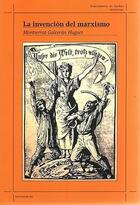
At Marx's death on March 14, 1883, Marxism no longer existed. Undoubtedly, a bad copy of the old Communist Manifesto was in circulation, and the first volume of Capital had been reprinted. There was also a French translation of that first volume, as well as various short texts, pamphlets, and brochures: the analysis of the 1871 Commune, the speech at the Hague Congress of the International. How, then, did this identification between social democracy and the labor movement come about? In this book, Montserrat Galcerán conducts a historical investigation into the formation of Marxism through its bearer, the labor movement. The author traces the main events in whose interpretations this doctrine was forged: the discussions and publications of the period, the political and theoretical positions taken by the labor movement and especially by its paradigmatic organization, German Social Demo...read more








